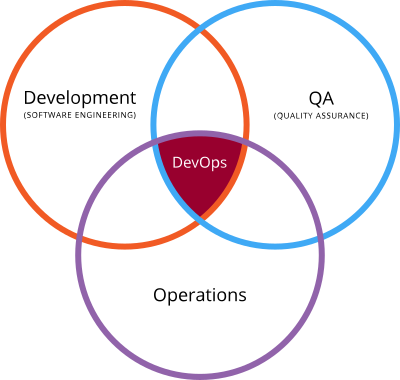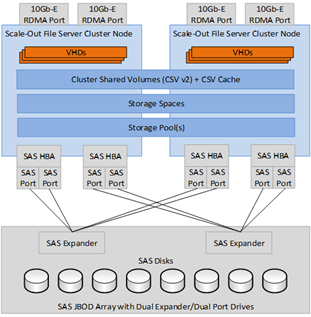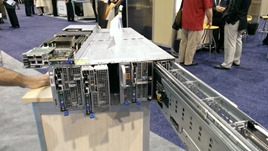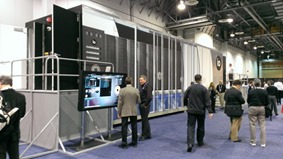Gartner Datacenter 2012 Conference
I had the chance to attend one of my favorite conferences last week, albeit not my favorite location (Vegas). The Gartner Datacenter Conference is the world’s longest-running datacenter conference at over 30 years of age. It brings together top analysts and research, vendors, and guest speakers to help IT decision makers understand where this industry is going, where to invest and what to do. Here I will try to boil down my 8 pages of notes into some useful information for you bearing in mind that I cannot redistribute Gartner research and, of course, that I work for Microsoft.
First up was the keynote which set the stage for the remainder of the conference entitled “What will happen to IT in the next 5 years?” Basically this is a presentation version of Gartner’s Critical IT Trend for the Next 5 Years.
- Organizational Entrenchment and Disruptions
- Software Networks
- Bigger Data and Storage
- Hybrid Cloud Services
- Client and Server Architectures
- The Internet of Things
- IT/OT and Appliance Madness
- Operational Complexity
- Virtual Data Centers
- IT Demand
I won’t belabor all these topics, but let me point out some key predictions. First of all, the way IT operates is changing and that change will increase at a ridiculous pace. Many pressures will force this change including a rapidly changing vendor landscape, significant growth in IT complexity, reduced budgets, shorter dev, release, and change cycles, cloud, and more. “For every 25%  increase in functionality in a system … there is a 100% increase in the complexity of that system - Glass' Law (applied to IT): (Source: Roger Sessions — ObjectWatch)” We heard several themes to address these pressures, one in particular got a lot of attention called DevOps. DevOps is about “Improving collaboration and communication between development and operations teams” often involving a new set of tools and methodologies for the purposes of increasing IT service delivery agility and (hopefully) quality. This is a pretty radical idea for most enterprises including things like embedding ops people in dev teams and vice-versa, but if things like Cloud are happening and applications are starting to look different to take advantage of them, you may need to reconsider operations. Cameron Haight is a champion for DevOps, learn more at his blog.
increase in functionality in a system … there is a 100% increase in the complexity of that system - Glass' Law (applied to IT): (Source: Roger Sessions — ObjectWatch)” We heard several themes to address these pressures, one in particular got a lot of attention called DevOps. DevOps is about “Improving collaboration and communication between development and operations teams” often involving a new set of tools and methodologies for the purposes of increasing IT service delivery agility and (hopefully) quality. This is a pretty radical idea for most enterprises including things like embedding ops people in dev teams and vice-versa, but if things like Cloud are happening and applications are starting to look different to take advantage of them, you may need to reconsider operations. Cameron Haight is a champion for DevOps, learn more at his blog.
Surprising to many, Software Defined Networks (SDN) comes in at #2. Really? The #2 most disruptive trend? I found that hard to believe. I attended a round table with engineers, architects and managers from several large companies and governments and this corroborated my assumption. Yes, SDNs are compelling in some situations (large, complex networks, multi-tenancy, hosters) and certainly are going to become more common, but at the moment it’s pretty far down the list of technologies that enterprises are evaluating to drive their datacenters forward. I think it falls more into the category of the something vendors are investing in for future market differentiation. Microsoft is certainly investing in this space with Network Virtualization in Windows Server 2012 which leverages NVGRE and then Software Defined Networks which layers System Center management on top to achieve policy-based virtualized networking. Like many things each vendor may define SDN differently or rather talk to certain aspects of it in order to highlight their own product capabilities. Cisco gave a session on SDNs which many I spoke to found a bit confusing. The most basic definition I heard was moving the control plane from individual network devices to a centralized model which can dynamically control the network as a whole.
Moving on, probably the biggest surprise to me was just how big Big Data will be. IT demand will see AARG in this distribution: 10% Server, 35% Network, 50% Storage, 20% Power. By 2020 global data growth is predicted at 50X. So you can see the most pressure is on storage in a BIG way. Some more stats (I’m a statistic junkie): Worldwide information volume is growing at an annual rate of 60% or more; 70% to 85% of data is "complex mixed data types."; Managing data costs three times more than procuring storage; More than 85% of performance issues are related to traditional application data growth. What is causing all this data growth? There are many factors but one of interest is what Gartner calls (#6) “The Internet of Things”. Basically it means everything will become internet connected. Clothes, tires, signs, bridges, etc. There are already more internet connections on earth than people, and this trend will continue into the 10s of billions.
I’m something of a storage fanatic so I’ll have to stop short of everything I’d like to say on this topic. But I will reiterate this: you probably need to rethink how you do storage. Direct quote: “Rethink SANs”. It just so happens we’ve been rethinking storage at Microsoft as of late. I highly encourage you to consider taking a look at some of these advances in Windows Server 2012. What will you do with all these new capabilities? Within our Datacenter Services portfolio we’ve come up with an architecture pattern we call Continuous Availability over SMB. This pattern uses Scale-out File Servers with low-cost, commodity disks and new features such as Storage Spaces, SMB3, CSV2, RDMA, and others to deliver a storage option at significantly lower cost with massive scalability, capacity, and availability. You can store your Hyper-V VMs and other critical workloads on file-based storage giving you a very compelling, low cost storage solution which includes some critical features previously only found in SANs such as data de-duplication and thin provisioning.
 Am I saying ditch your SAN? Not necessarily. I’m saying the demand for storage will increase at a rate your budget can’t keep up with. So reserve your SAN for workloads that really require those features and look to these new architectures to meet demand. Appliances (#7) will also become more pervasive in the storage market and in all markets. You can see some cool stuff we’re doing such as Cluster-in-a-Box and new Private Cloud Fast Track solutions. Dell had a C8000 on display, perfect for taking advantage of Microsoft’s new high-density storage and virtualization capabilities.
Am I saying ditch your SAN? Not necessarily. I’m saying the demand for storage will increase at a rate your budget can’t keep up with. So reserve your SAN for workloads that really require those features and look to these new architectures to meet demand. Appliances (#7) will also become more pervasive in the storage market and in all markets. You can see some cool stuff we’re doing such as Cluster-in-a-Box and new Private Cloud Fast Track solutions. Dell had a C8000 on display, perfect for taking advantage of Microsoft’s new high-density storage and virtualization capabilities.
Now for some Cloud action. Yes, cloud is hugely disruptive and was talked about a lot, even in sessions seemingly unrelated. The fact is Cloud is happening in a big way. It’s changing the traditional datacenter model impacting everything from the service request to the service delivery. While Private Cloud is already becoming a major trend, we are now entering the era of the Hybrid Cloud with 2013-2015 being the critical timeframe. Business agility is the main driver for adoption.
Basically Hybrid Cloud means operating an on-premise private cloud as well as leveraging public clouds, although it does not necessarily mean applications that span both. In Thomas Bittman’s talk he stated that the vast majority of Hybrid uptake will occur at VM provision-time decisions, not application spanning. Dominant features include broad virtualization, user self-service, and metered usage. A key element of the architecture, and therefore where a lot of action is happening, is the Cloud Management Platform. This is a busy and confusing vendor landscape and vendor lock-in is a big concern (see Gartner’s Cloud Management Platform Vendor Landscape). Multiple service providers will be common and the CMP is a linchpin in managing this complexity. As it so happens, Microsoft is extremely well positioned in this space. Yes, I work here, but I also like to think that if I didn’t I would objectively draw this conclusion. Bittman noted Microsoft as having a very strong stack with Hyper-V, System Center 2012, and Azure but that we now need to execute (sell). Cross-platform, interoperability and integration are all big themes found throughout our stack.
There’s a ton more to talk about but I’m going to have to wrap-up. I was really impressed with this conference and the crowd it drew. I thought HP made excellent use of their time-slot showcasing not products but their Datacenter Transformation  Workshop. IO made a very strong case that traditional brick and mortar datacenters are not sustainable and had a large presence showcasing their smart containers and software. They say it’s time for Datacenter 2.0. VMware certainly still has a lot of mind-share and market-share, but it’s interesting to see the challenges they face ahead. We have published a comparative whitepaper if you want to see Microsoft’s value proposition vs. VMware.
Workshop. IO made a very strong case that traditional brick and mortar datacenters are not sustainable and had a large presence showcasing their smart containers and software. They say it’s time for Datacenter 2.0. VMware certainly still has a lot of mind-share and market-share, but it’s interesting to see the challenges they face ahead. We have published a comparative whitepaper if you want to see Microsoft’s value proposition vs. VMware.
________________________________________________________
Adam Fazio
Solution Architect
Microsoft | Datacenter & Private Cloud Center of Excellence
twitter: @adamfazio